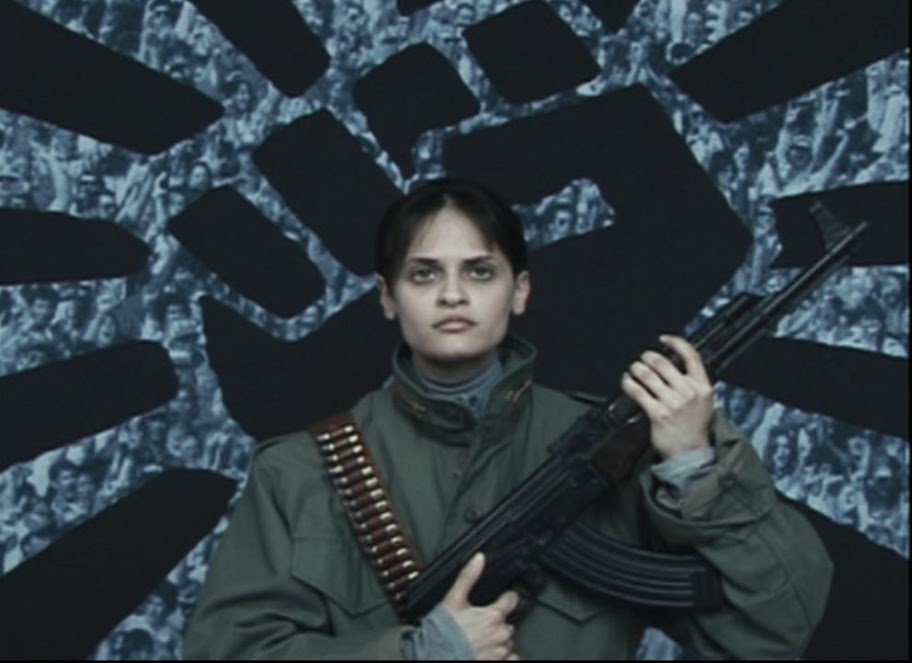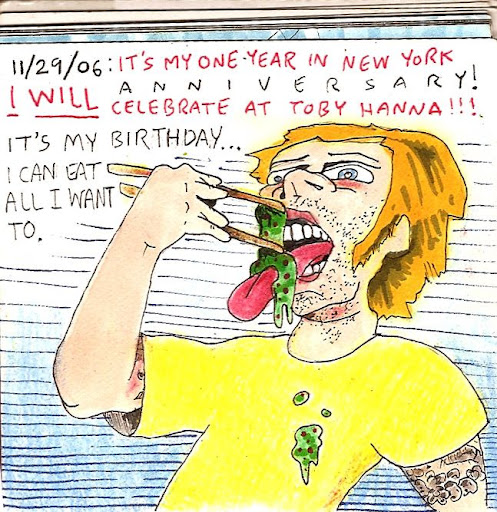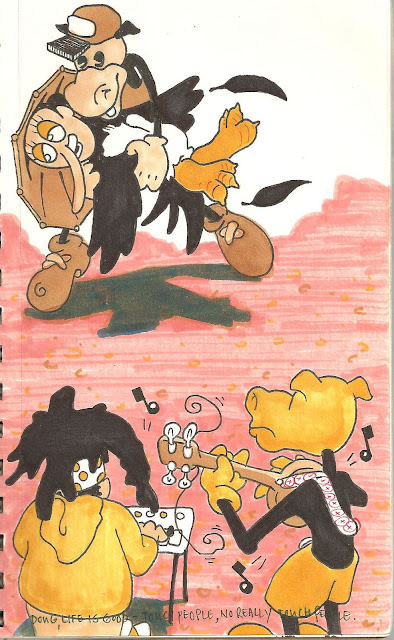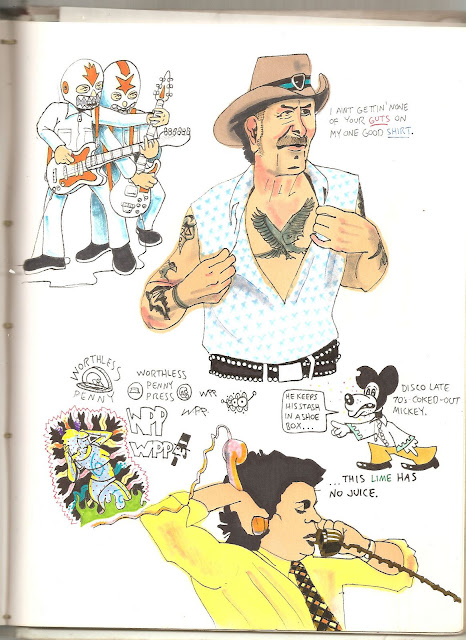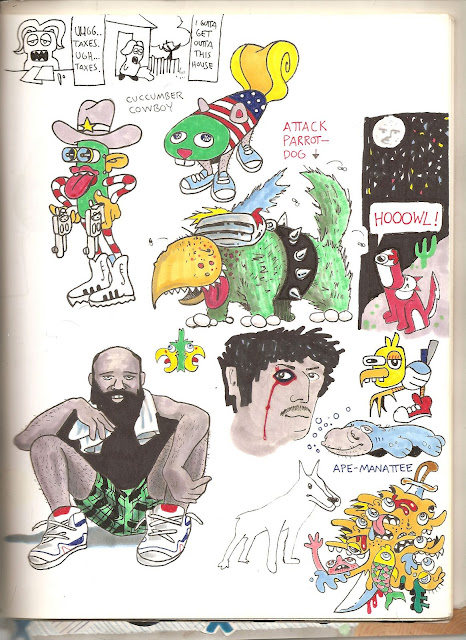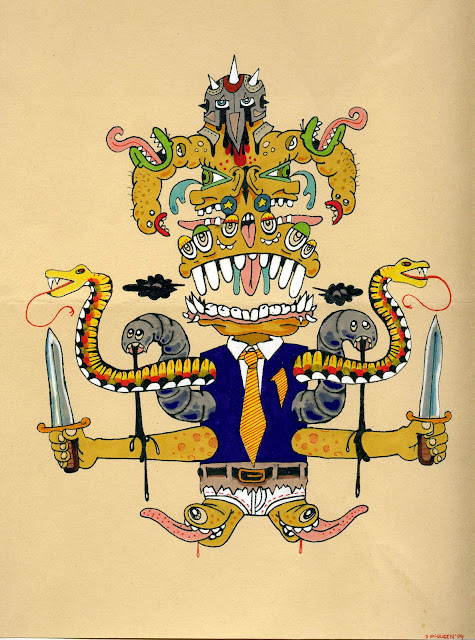
Luisa Colon (aka Luisa Williams) is an amazing young actress, artist, and film maker who lives in Brooklyn, NY. She made her screen debut as the star of the 2007 film "Day Night Day Night." The movie tells the story of a young woman in the final hours of her preparation to become a suicide bomber in Times Square. It's one of the most chilling and genuinely riveting movies I've seen. It's intense from start to finish, and Luisa's performance in this role is absolutely unforgettable and mesmerizing. Simply put Day Night Day Night is a must-see. You should rent or netflix this movie immediately.
Luisa also plays the role of "Friendly Neighbor" in the long running sit-com that is Fortress America. She can often be spotted in the video store that I live above, which is where we first met. If you ever meet Luisa you will see just how spectacular of a job she did in the movie, because in real life she is one of the sweetest and warmest people you could imagine.
In addition to acting and film making, Luisa is also an artist and illustrator who's working on a graphic novel based on the life of Jean Seberg. She was so incredibly nice that not only did she answer her interview questions, she actually illustrated some of them!
Please check out this trailer for Day Night Day Night and then read to learn more about Luisa! Thanks!
(Notes: Clicking on any image will bring up a larger version. All illustrations © Luisa Colon 2008. Photographs © Raphael Laski Film stills are © the producers.)

It says on IMDB that you got this job while “working as a nanny when she auditioned for "Day Night Day Night" after seeing a flyer for open casting calls on the boardwalk in Coney Island.” Is that accurate? Did you have acting training or experience?
Luisa Colon: I was working as a nanny when I saw the flyer on Coney Island, and that made a cute story. But it was not out of the blue for me; I went to the High School of Performing Arts and was a drama major, so I had definitely considered acting as a career. I had always wanted to be part of the filmmaking process, and I had wondered what it would be like to act in a movie. So when I responded to the flyer and contacted Julia Loktev, the writer/director of "DNDN," I told her pretty much that. I wanted her to know up-front that I wasn't a professional. It turns out she was looking for an "unknown," so it was perfect.
What kind of preparation did you do to play this character?
For a little under a year before we shot, Julia and I were totally immersed in building this character together. We did exercises to create her walk, how she talked, everything. And I read a lot of books. Every book we could find about Joan of Arc, including one by Mark Twain. Books about suicide bombers and terrorism, in addition to movies and documentaries on the subject. The movies were varied; some of them were "Battle of Algiers," "The Matchstick Factory Girl," "Rosetta," "Terror in Moscow." Carl Dreyer: "Day of Wrath" and, of course, "Passion of Joan of Arc." Julia introduced me to the work of Robert Bresson, for which I will always be grateful: "A Gentle Woman," "The Trial of Joan of Arc," "Mouchette." The movies Julia wanted me to see were not necessarily movies about terrorism; it was also so that I could understand the sensibility she was looking for. Hence, Bresson, Dreyer, the Dardenne Brothers, etc. I really embraced it.

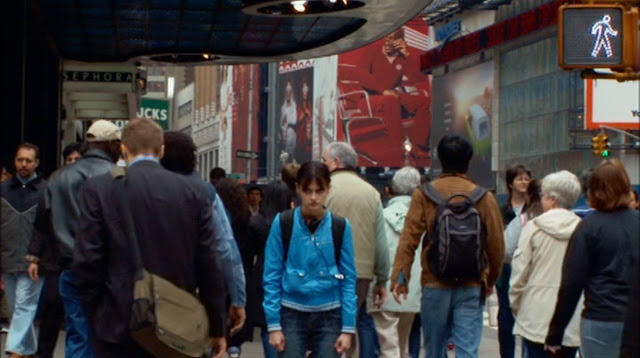
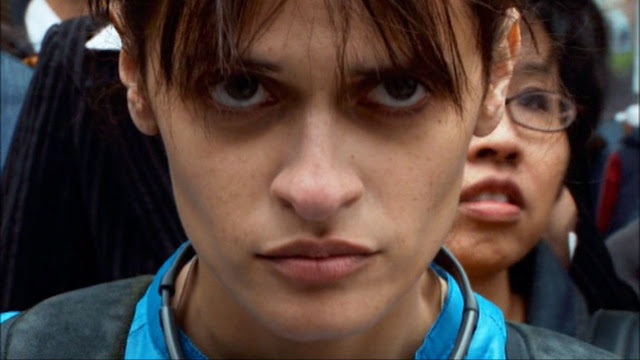
Was it difficult to go in and out of character while making this film? Was it just a case of showing up for work everyday or did you have to sequester yourself and try to be the character all the time?
It was definitely not a case of showing up for work every day, yet at the same time, the very fact of the filmmaking process prevented me from being 100% in character. This was a girl on suicide mission, not a girl trying to hit her mark for the camera. But having said that, there were very interesting parallels between the character’s situation and mine, and emotionally I tried to make the most of that. This character was trying to please; she was trying to accomplish something; she was goal-minded; she was determined; she was in unknown territory, out of her element; she was unsure of herself. Those characteristics applied to me too. Obviously there were profound differences, but in an abstract sense, there were parallels that were very useful.
How did you stay focused amid the chaos of Time Square? It seems like it would be extremely difficult to maintain character while walking around in such an uncontrolled environment.
I like to think I have very good focus and concentration.
One thing I’d like to mention is that is was rather cold when we were shooting in Times Square. At least for me; I tend to run very cold. That in itself wasn’t so important, but my nose would turn bright red.
 It was completely un-photogenic. It became an issue: how to deal with Luisa’s red nose. Someone bought a scarf from a street vendor and I would wrap it around my face in between takes to try to warm up and decrease the red in my nose. We also bought some kind of lotion that was green, and it was meant to counter-act redness in one’s complexion. I think it was really meant for people who generally have redness in their skin. I’m not sure if it worked. Julia said afterwards that she thought I willed my nose to de-redden, through sheer will power.
It was completely un-photogenic. It became an issue: how to deal with Luisa’s red nose. Someone bought a scarf from a street vendor and I would wrap it around my face in between takes to try to warm up and decrease the red in my nose. We also bought some kind of lotion that was green, and it was meant to counter-act redness in one’s complexion. I think it was really meant for people who generally have redness in their skin. I’m not sure if it worked. Julia said afterwards that she thought I willed my nose to de-redden, through sheer will power. How long were you working on that movie and how much of that time was spent filming in Times Square?
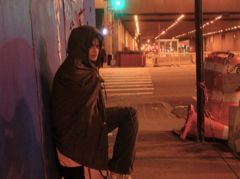 Actual filming of the movie was about five weeks. But I was totally involved in it for about a year beforehand, with Julia, and she also generously let me be part of the post-production process. I did my own Foley work, for which I insisted on a credit. The Times Square portion was a couple of weeks, I think. (I'm a little hazy on it now.)
Actual filming of the movie was about five weeks. But I was totally involved in it for about a year beforehand, with Julia, and she also generously let me be part of the post-production process. I did my own Foley work, for which I insisted on a credit. The Times Square portion was a couple of weeks, I think. (I'm a little hazy on it now.)Did you lose a lot of takes to people in the crowd interjecting themselves into shots, talking or gesturing at the camera, etc?
On one of the first days of shooting, a bunch of older tourist-looking women started shrieking at me, "EAT IT. EAT IT" when I eating one of those candy apples. Finally I lost my concentration and looked at them; they looked and sounded so malicious.
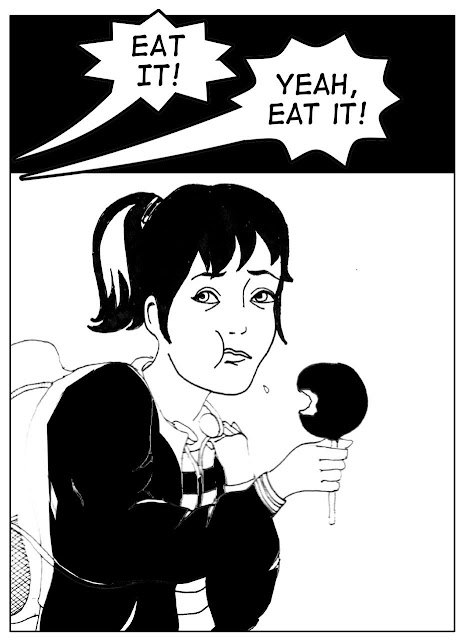 They were like this gaggle of malicious geese. I don't know what they were thinking. After that I resolved to have excellent concentration, no matter what. But people were pretty good otherwise about not getting in the way of the shoot. Sometimes they would stop and stare, or take pictures, or say, “Is she all right?”
They were like this gaggle of malicious geese. I don't know what they were thinking. After that I resolved to have excellent concentration, no matter what. But people were pretty good otherwise about not getting in the way of the shoot. Sometimes they would stop and stare, or take pictures, or say, “Is she all right?”Re: Candy Apples
A note about the candy apples. I hated them. I don't have a big sweet tooth, but when I want something sweet I like chocolate or baked goods. If I had to choose some sort of apple thing, it would be a caramel apple. Eating those candy apples was like biting into glass. My mouth felt shredded. When I brushed my teeth that night, it was like rubbing toothpaste on fresh wounds. Don't ever put toothpaste on a wound.
Then there were some shots (later cut from the movie) of me with the eaten-up candy apple in my hand. I was sick of eating those apples, so Julia and the A.D. chewed up some candy apples for me to hold. But I had to nibble at the pre-chewed apples for the shot. Let's just say even if I loved candy apples then, I wouldn't have after that.
When we did Foley work in post, Julia and I went back to the same hotel (same room, even!) that we used in the movie. And on the way we bought candy apples and I ate them with my mouth right on top of a mike.
Were you at all freaked out while you were in character and walking near the police?
My character was painfully aware of them. My real self knew that we had a permit, and that the bag was stuffed with textbooks, as well as makeup and Odwalla bars.
I feel a big separation between myself, Luisa Colon, and myself as an actress: Luisa Williams. When we were preparing to shoot “DNDN,” I was married (I’ve since divorced). I did feel this huge separation in terms of who I was, and the process I was about to undertake. So it seemed like a good solution to use my married name, Williams, as a screen name. Something to delineate that separation I felt. It’s still the name I would think of as my screen name (and how I was credited in a short film I was in, “Anna”).
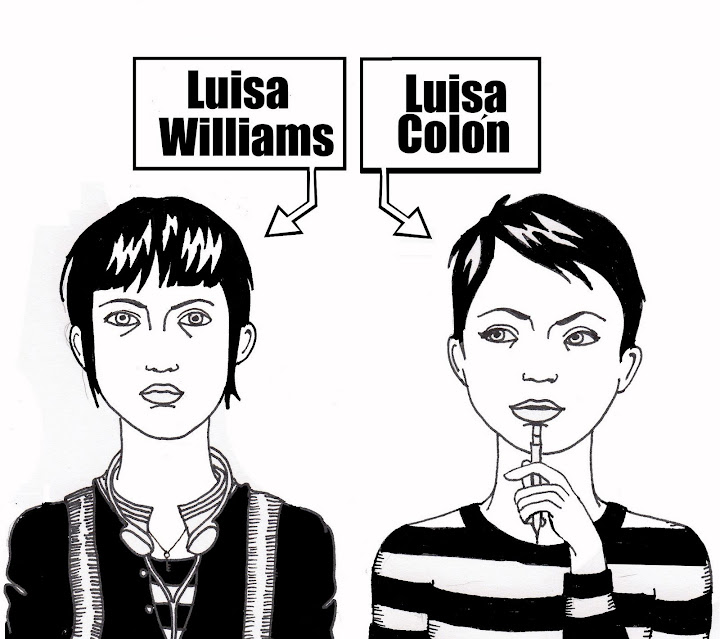
A long time ago I was in the video store and I saw an incredible drawing on the computer that you had done in Microsoft paint. Do you have any of those images that I could show on the blog? How do you make such great pictures with such a limited little program?!?!
Aw, thanks! I don’t have any of those images. My Dad, who is an artist, bought a computer very early on and it had Paintbox-type programs. He gave me some tips and then let me explore them on my own. So I’ve been playing with programs like that since I was a kid.
Whe we last spoke you mentioned that you are currently working on a graphic novel about the life of Jean Seberg. Could you describe that project a little and tell me where the idea came from?
Jean Seberg is probably my favorite actress/icon. There are plenty of actresses I love, and some icons, but I think Jean Seberg tops the list, in that I have been consistently preoccupied with her since I was very young. She was a fascinating person as well as a mesmerizing screen presence. Unfortunately, she didn’t ultimately find happiness in her life, and she killed herself when she was about 40. Her life story is unbelievable, incredibly eventful with strange twists and turns, and intrigue, and broken hearts, and tragedy, and the FBI. I put two things very dear to my heart -- Jean and the graphic novel format -- and that became the “Untitled Jean Seberg Project” that I’m working on.
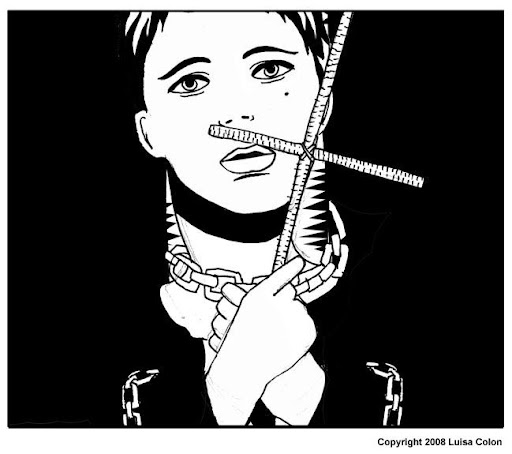
Do your acting / filmmaking skills come into play in producing a graphic novel? It seems like it could be very much like drawing a storyboard or writing script dialog.
I would say that my love of film, and my love of the graphic novel format inform each other, but I’m not sure which comes first. It’s a love of imagery, the same reason I like to put images up on the computer at work, to be surrounded by a sensibility that is meaningful to me, even if it’s hard to explain why.
When doing a biography, how do you select what moments from someone’s life to include?
I’d say, immerse yourself in their life as much as possible through research, biographies (if they exist), photographs, personal items (if possible), and travel. Immerse yourself, and when you surface, examine what you brought with you.
THANKS LUISA! THANKS READER!
